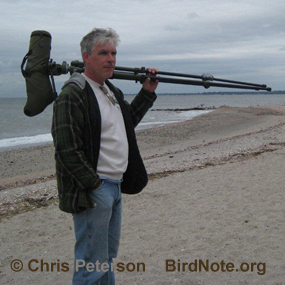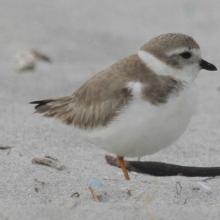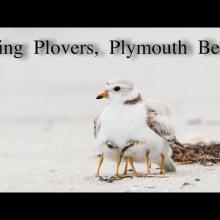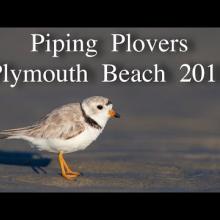

Join BirdNote tomorrow, November 30th!
Illustrator David Sibley and actor H. Jon Benjamin will face off in the bird illustration battle of the century during BirdNote's Year-end Celebration and Auction!
How did birds and their habitat fare in the wake of Superstorm Sandy? Patrick Comins of Audubon Connecticut, says: "It was extremely powerful. There was significant erosion and over-washing of dunes and beaches. I've had the chance to visit a few of the important nesting areas for Piping Plovers, and the damage is significant. And whether that's going to be good for the birds or bad is not yet determined." … "This storm really underscores the importance of undeveloped coastal habitat areas and the need to identify the key natural resources both for birds, but also for buffer, protection, for human development." (This Piping Plover nest was photographed at Griswold Point in Old Lyme, CT earlier in 2012.)
BirdNote®
The Effects of Superstorm Sandy on Birds and Habitat
Featuring Patrick Comins
Written by Todd Peterson
This is BirdNote.
[Brian Williams of NBC: “On our broadcast tonight, Hurricane Sandy, a history-making weather event coming ashore this evening and changing the map of the coastline in some places…” + high wind and heavy surf]
How did birds and their habitat fare in the wake of the storm? To find out, we called Patrick Comins, Director of Bird Conservation for Audubon Connecticut.
“It was extremely powerful. It’s going to be a big job trying to assess the actual damage to bird habitat.”
“There was significant erosion and overwashing of dunes and beaches all up and down the Eastern Seaboard … I’ve had the chance to get out along the shores of Connecticut and visit a few of the important nesting areas for things like Piping Plovers and Least Tern …and the damage is significant…and whether that’s going to be good for the birds or bad for the birds is [not] yet determined…”
And what does Hurricane Sandy foretell about the future?
“This storm really underscores the importance of undeveloped coastal habitat areas…it’s likely that we’re going to get more of these storms in the future and as sea levels rise, the storms will have more significant impacts to coastal areas, so it really underscores the need to identify the key natural resources both for birds, but also for buffer, protection, for human development. Barrier beaches and marshes and flood plains are really important buffers against natural disasters that affect humans and…despite the current fiscal situation, we cannot relax our efforts to protect these areas, not just for the benefit of the birds… but also as smart planning for our society.”
[High wind and heavy surf]
To learn more, begin at BirdNote.org.
###
"NBC Nightly News with Brian Williams" October 30, 2012
Producer: John Kessler
Executive Producer: Chris Peterson
© 2012 Tune In to Nature.org December 2012 Narrator: Michael Stein
ID# hurricane-04-2012-12-03
Marantz IV Track 102 + 124:24 + 119:35 + 133
Link to https://www.facebook.com/pages/Audubon-Alliance-for-Coastal-Waterbirds/…







